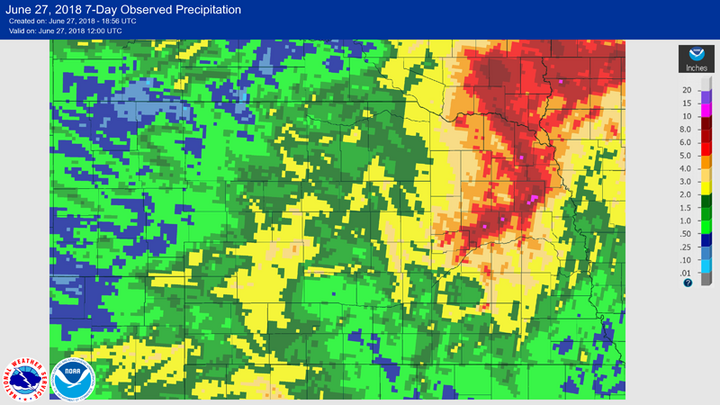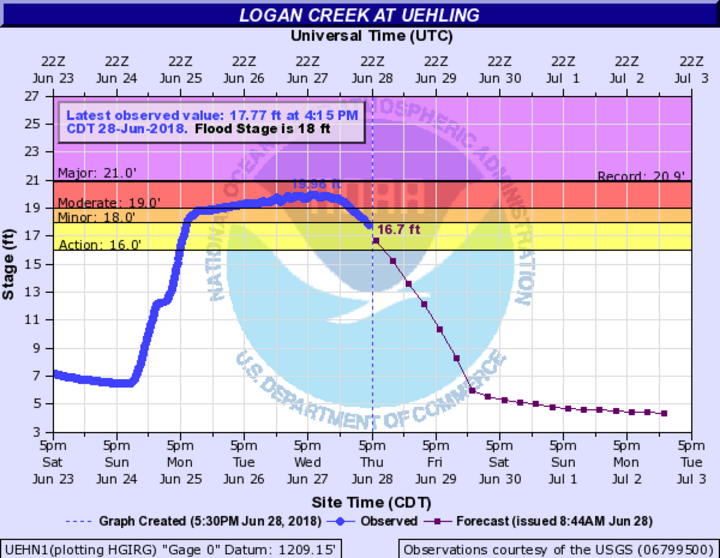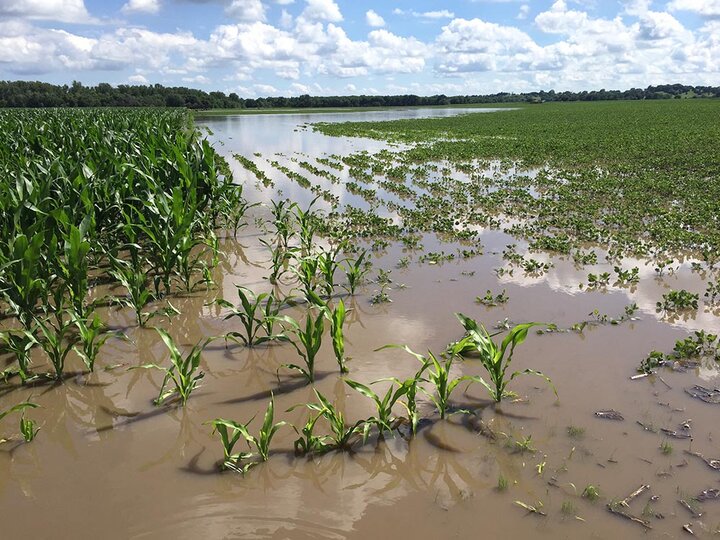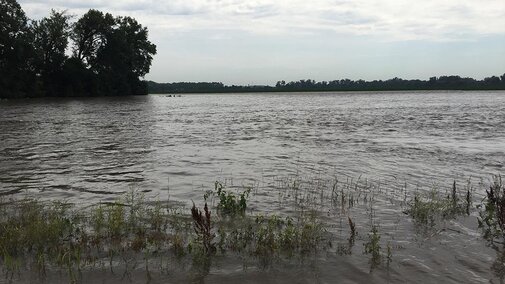Rainfall in excess of 10 inches (Figure 1) fell across portions of northeast Nebraska June 21-27, leading to significant flooding of the Elkhorn River and Logan Creek along with many other streams (Figures 2 and 3).
Corn and soybeans range in growth stages and height due to replanted acres from an earlier June hail event across portions of Burt, Cuming, and Dodge counties. In consultation with crop insurance agents, adjustors, and agronomists, we anticipate producers will have to make some important management decisions in the coming week regarding fields impacted by flooding.


Flood Survival of Corn and Soybeans
The first question farmers ask is "How long can soybeans and corn survive flooding at various growth stages as well as how much of the crop will be lodged by fast-moving flood waters or covered with sediment and debris?" For a majority of the corn acres in growth stage V7 to V14, plants can survive 7 to 10 days in flooded fields. More will be known next week as flood waters recede, but for now, see articles in the June 22, 2018, CropWatch on corn and soybean survival by growth stage:
Crop Insurance and Replanting Considerations
Replant options within your crop insurance policy are more limited in late June into early July. Talk with your crop insurance agent as soon as possible if you haven’t already. Given the forecast for more rainfall over the next week and the time needed for flood waters to recede and soils to dry out, replanting might not be possible on some fields until the second week of July. Often this would be too late to plant corn and soybeans for grain crops. If it is not possible to replant the first insured crop, the acres can be left idle or planted to a second crop and not insured. You would still be able to receive the indemnity payment for the first crop. Regardless of what you plant (corn, soybeans, forage crop, cover crop), please review herbicide labels for restrictions. Learn more by reading these resources:
- Crop Insurance Impacts from Recent Flooding
- Flood Impact and Crop Insurance FAQ (second to last question) (pdf)
- Replant Options Following Corn Herbicide Applications
- 2018 Guide for Weed, Disease, and Insect Management in Nebraska, pages. 175-194
Crops Recovering from a Flood
Assuming your corn crop survives, potential for nitrogen loss in flooded fields may be a concern. A lot of corn is too tall for a normal sidedress application, therefore high clearance rigs and fertigation are the primary options to add nitrogen. Learn more about potential losses and steps to take soon in these past CropWatch articles:


Specific diseases that may develop following flooding in corn and soybeans are addressed in these articles:
Flooding only will not warrant a fungicide application. The recent wet weather may increase the chance for certain diseases to develop (not associated with flooding specifically), such as gray leaf spot in corn and frogeye leaf spot in soybeans. Continue to scout fields for foliar diseases as you normally do this time of year, keeping in mind the yield potential of your field. Watch for updates in future CropWatch articles if diseases start to develop in the area. Also, if flood waters delayed crop development and canopy closure in soybean fields, be prepared to treat with herbicides for late season weed control if needed.
Another consideration for soybeans following a flooding event is the possible introduction of soybean cyst nematodes (SCN) in a field. Anything that moves soil particles can also move SCN. Even if you did not have SCN in your field prior to flood waters in your field, it is possible it will be there afterward. If SCN is introduced, it is likely to be in low levels and take several years for populations to build high enough to reduce yields. It would be advisable to sample the flooded areas in fields this fall for SCN. If it is detected, you can begin managing it right away to keep the levels low before it reaches yield-reducing levels. Contact your local Nebraska Extension office for bags to submit soil samples for analysis. For more information see
Repairing Flood-Damaged Fields
Repairing flood-damaged fields includes dealing with sediment, scouring, and debris. For more information on dealing with physical damage to fields, refer to the following resource that was developed following the 2011 Missouri River flooding:
Cover Crops for Flood-Damaged Fields
If replanting to corn or soybeans is not possible, planting a cover crop is one option. Cover crops can help capture remaining nitrogen in the profile. For more information on cover crops, refer to the following resources,
Resources
For information on preparing for and responding to flooding to your home, business, farm and ranch see Flood.unl.edu.
Guest Reviewers
Special review by AFRI-ELI Undergraduate Research and Extension Experiential Learning Fellows Kylee Farabaugh, Abigail Borgmeier, and Elise Elizonda.

